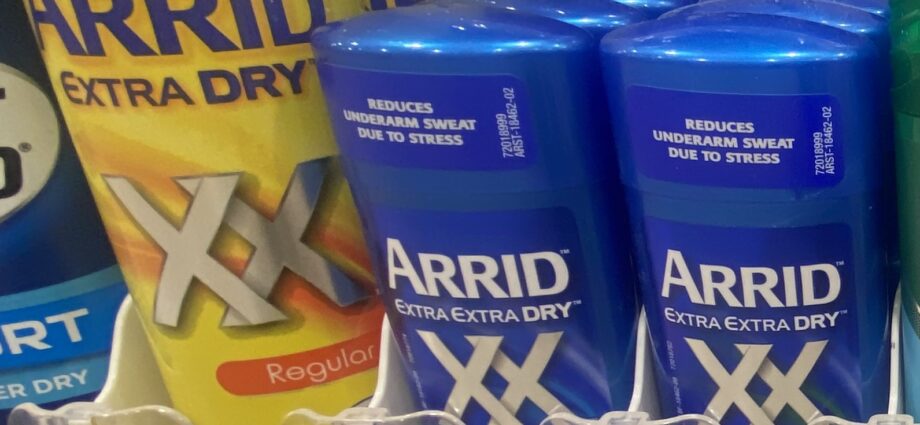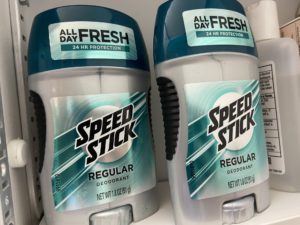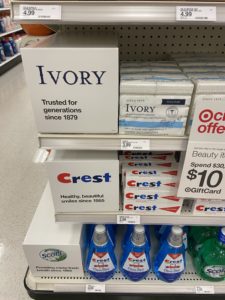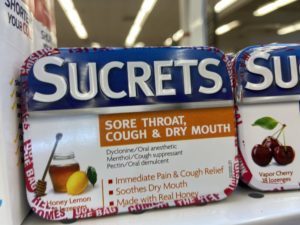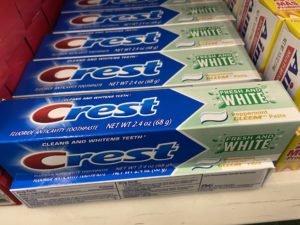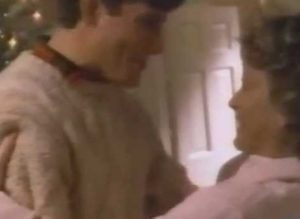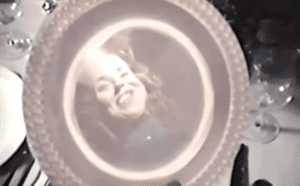Many powerful brands lose their shelf space, and end up shuttered or at least diminished. But there is one category where many smaller brands have survived, and even thrived. Underarm deodorant and anti-perspirant.
At a Florida Publix, the power of these brands is evidenced by the fact that even in a small square footage store, they command the bottom two row of the deodorant aisle, Brands like Arrrid, Right Gard, Mitchum, Brut, Dry Idea and Ban have all survived into 2024, even as the heydays for many of these names were in the 1970s.
Below, the aisle, which shows the various price points and brands. Note that Procter & Gamble’s Gillette, Colgate’s Speed Stick (formerly “‘By Mennnen”) and Unilever’s Axe have multiple spots on the second to the bottom row, but the bottom row has some brands that are over 60 years old.
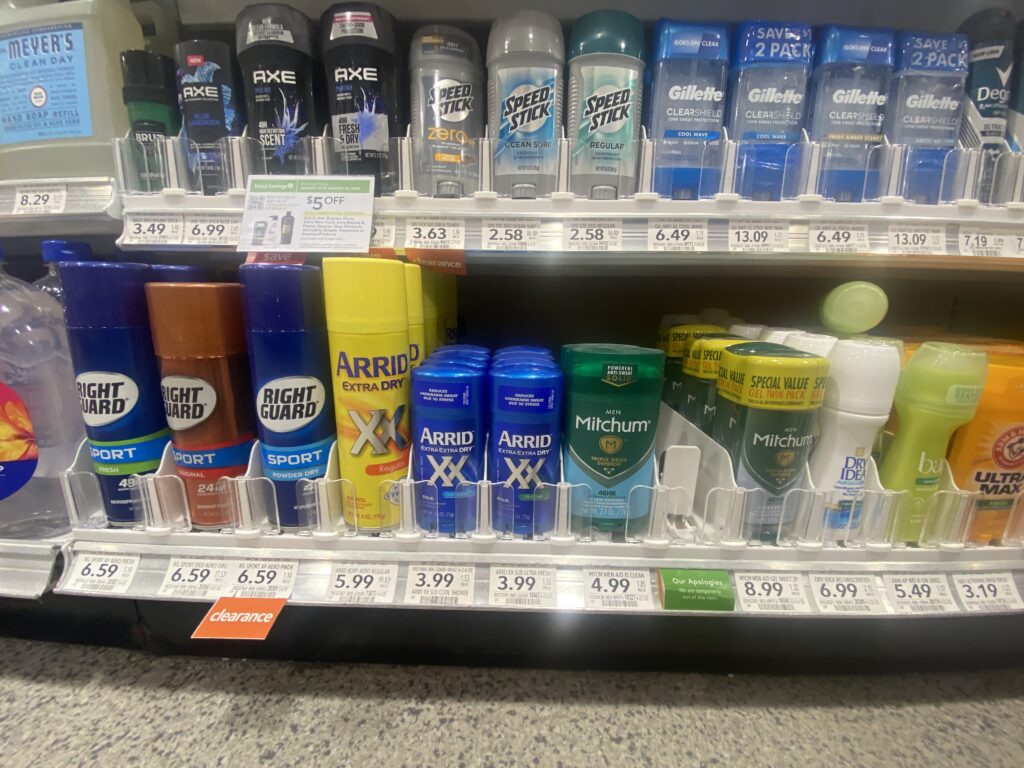
Smaller cosmetics, toiletries and soaps, which in the old days were categorized as HABA, or health and beauty aids, are high margin products, and they exist with high margins, as they are essentially a plastic package and cheap ingredients. The consumer then gets used to the smell, and once trained, can stay with the product for decades, purchasing about one a month for their entire life.
The category also has turned into an area where companies are not afraid to invest, because of the success found with Procter & Gamble’s Old Spice, which had a cult popularity and smell when it was a product of Shulton, and then reinvented with new advertising. Ditto with Mitchum, which has three slots in the store. Writing in BrandlandUSA in 2013, consultant and marketing expert Julie Bauer advocated such an approach a decade ago in her story, “Private Equity Should Adopt Orphan Brands.” She worked with Saatchi & Saatchi as P&G transformed the old Shulton product into something completely new, yet rooted in what consumers loved.
Below, some of the products on the shelves in 2024, which often might have only been found in a Vermont Country Store catalog not too long ago.
Brut: Now a product of TCP HOT IP LLC. In a recall notice this was listed as “TCP HOT Acquisition LLC dba HRB Brands. It lists the trademark as owned by TCP HRB IP LLC. HRB is the acronym for High Ridge Brands, which lists a bevy of older brands as part of its portfolio. These include Pert, Zest, SeaBreeze, Sure, LA Looks, Rave, Coast and Infusium. These products were part of different brand portfolios. For instance, Brut was owned and distributed by Helen of Troy Limited prior to June 7, 2021, part of a portfolio of brands including Vitalis that they purchased for $44 million in cash. Sure, Pert and Zest were all P&G brands. One clue to an old P&G brand? The product name is short, and evocative, and not always related to the product, ergo current P&G brands Tide and Crest. It was originally marketed under the Faberge banner, with the slogan, “It smells like a man.” An idea: Brut may well be a good option for a revival of their shaving cream.
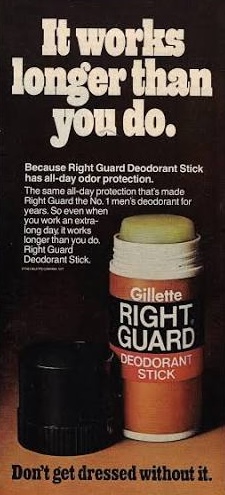
Right Guard: The brand is owned by Thriving Brands LLC of Cincinnati, led by Chris Capozzo. The product design currently on the shelf has the Right Guard logo with a circle around it, though there is an updated sans serif type design on the Right Guard website, with a moniker, “For Men Who Sweat.” Right Guard was originally a Gillette product, launched in 1960 as the first aerosol. When Procter & Gamble bought Gillette, they sold Right Guard to The Dial Corp, part of Henkel, in 2006. While it had a large following among the nations biggest brands, the Gillette brand was always part of the appeal.
A look at the current shelf of deodorants shows this dominance, as P&G has turned the corporate brand, Gillette, into the deodorant brand, to match the shaving component. Right Guard would do well to go back to more classic colors; it shows up every Christmas in “Home Alone” and is the brown, black and red colors are memorable even from a distance.
Dry Idea: The brand is also owned by Thriving Brands. Currently, their website has a “pardon our dust. We’re freshening up” message, with the note that a reimagined Dry Idea is coming soon. Dry Idea was always a roll on.

Arrid: A brand of Church & Dwight Co., which gives it enormous staying power through their long-standing ability to stick with classics. The best known slogan was “Get a little closer with Arrid Extra Dry.”
Ban: A product of Kao USA of Cincinnati. Kao is a Japanese company, but it owns dozens of brands in the U.S. including Curel, Jergens and Molton Brown London. In the 1970s, it was marketed by Tom Selleck. The brand was later marketed as “Ban and Sportswear” to the tune of “Love and Marriage.”
Sure is also one of the brands of longevity. It was a Procter & Gamble product, and grew massively with the “Raise Your Hand” song by the best ad singer and jingle of the 20th century, Jake Holmes. But notice that it is not on the shelves at Publix in the bottom rows. However, Publix has an easy mechanism with consumers can use to get it there. It has a button that looks like the below when you search for it on their website:

“Bring this product to your store” button when you search on their website. The copy reads “Talk to your grocery or store manager to help make this product available at your neighborhood Publix, or select a different store.” So the products here will be representative of what 60 plus Americans want, as well as the under 40 tradesmen and family who also use the store.
Yes, confident, dry and secure, “Raise Your Hand If You’re Sure.”

